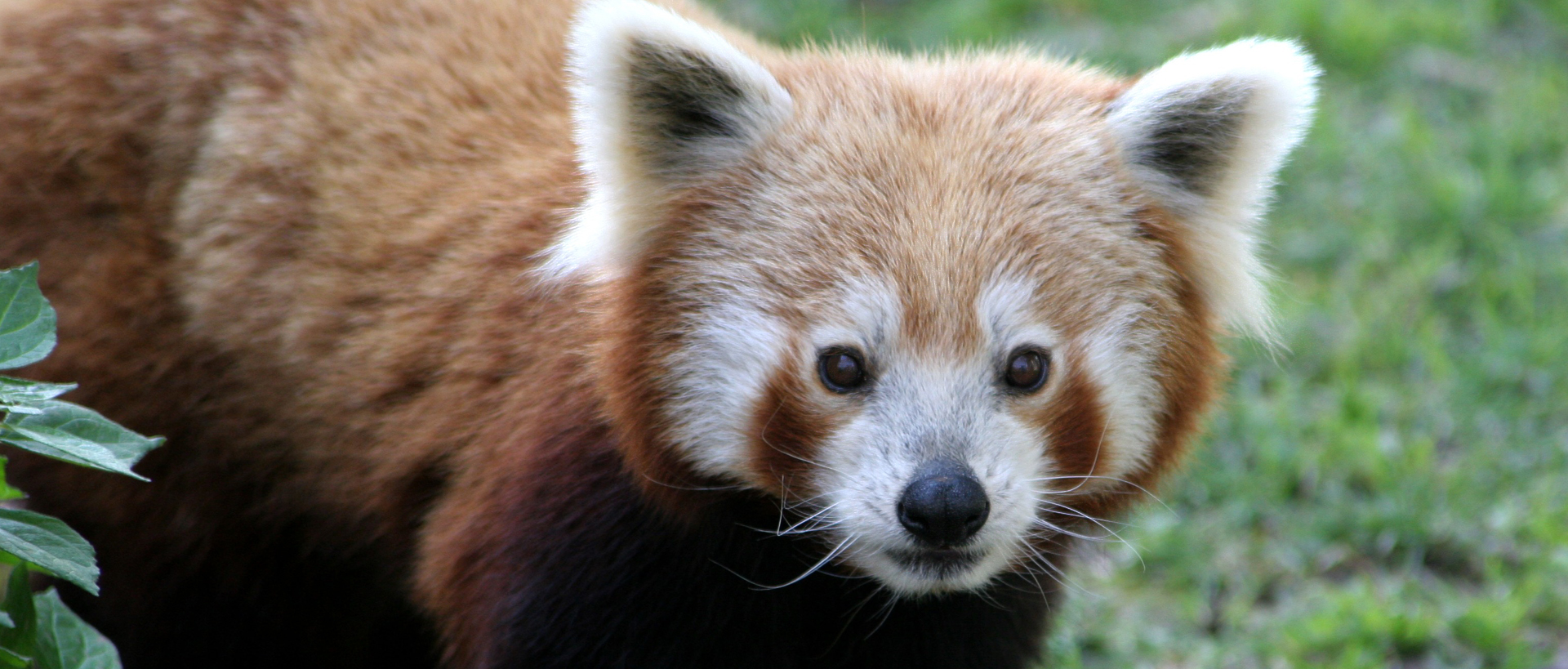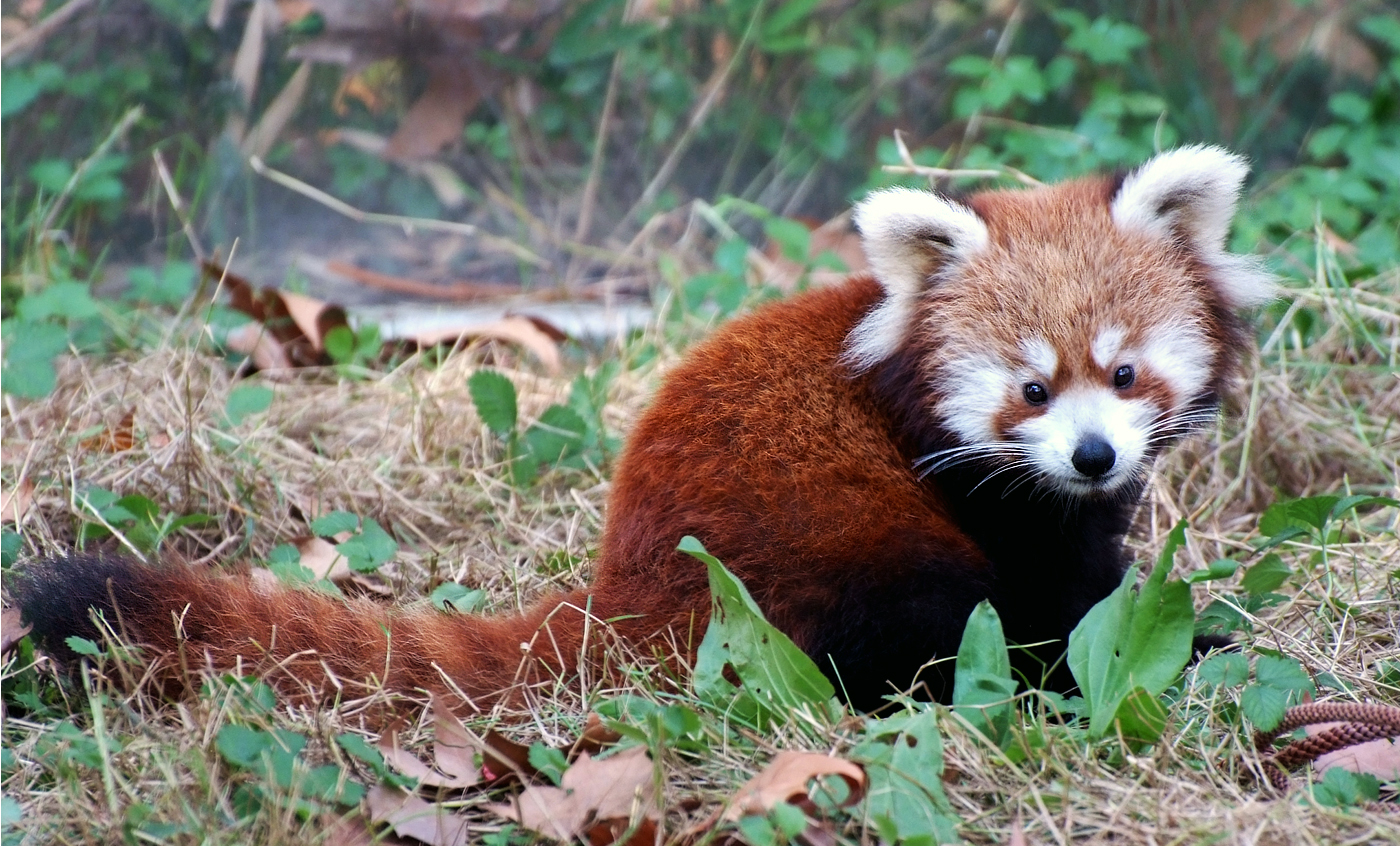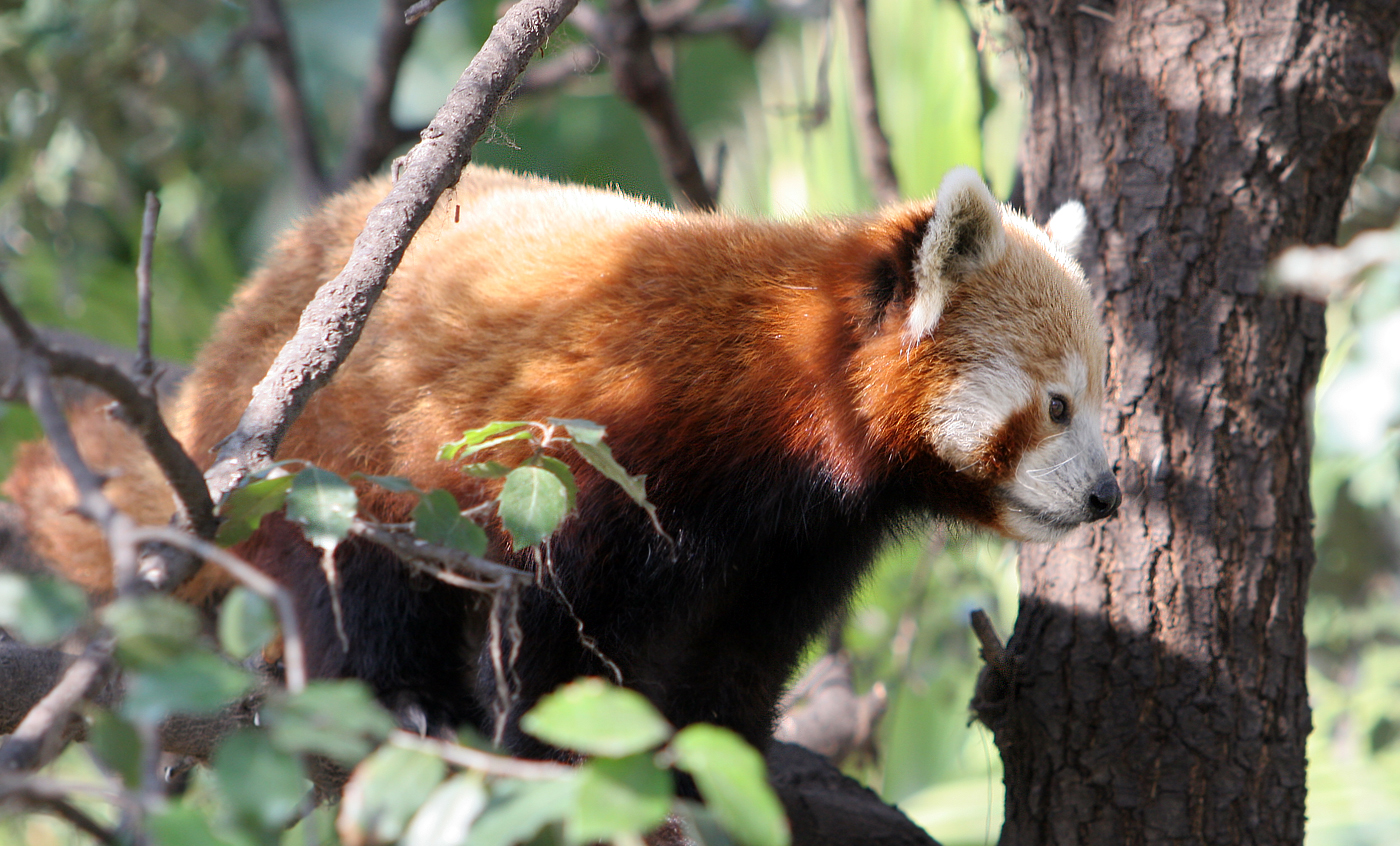Red panda
Although until recently it was thought to be directly related to the panda, these days expert believe it belongs to the ailurid family.
It is nocturnal and tree-dwelling, lives singly or in pairs in the bamboo forests at 1,500 to 4,000 metres high in the Himalayas, the north of Burma and southern China.
It is mainly vegetarian although it also catches insects, worms and even small vertebrates.
Breeding program
Natural habit
Bhutan, China, India, Nepal and Myanmar.

- Distribution / Resident
- Breeding
- Wintering
- Subspecies
Risk level
- Extint
- Extint in the wild
- Critically endangered
- In Danger
- Vulnerable
- Near threatened
- Minor concern
- Insufficient data
- Not evaluated
Taxonomy
Physical characteristics
Biology
Reproduction
Biology
It has a reddish-brown coat, with a blackish hue on the lower parts, long bushy tails with rings, and walks in a characteristic manner, due to its short rear limbs.
It lives in the temperate mountain forests of the Himalayas and in bamboo forests, between 1,500 and 4,800 m altitude.
The red panda, although belonging to the carnivore mammals order, is preferentially vegetarian, as it feeds on fruit, roots, bamboo sprouts and leaves and lichen, but it can also capture insects, worms and even small vertebrates.
The red panda’s gestation lasts for 114 to 145 days and one to four cubs are born each time, normally two, completely covered with fur, but blind and defenceless. They use holes in trees to build their lairs. In captivity, some have lived up to fourteen years.
It is a solitary animal that lives alone or in pairs. It is nocturnal and it lives almost exclusively on trees, among which it moves nimbly. However, it does not hesitate to go on the ground to move and feed. Two subspecies are known: Ailurus fulgens fulgens, found in the Himalayas, from Nepal to Assam (India), the one that can be seen at the Zoo of Barcelona; and Ailurus fulgens styani, living in northern Myanmar and southern China.
Its name is a reference to some of its similarities with the famous giant panda or panda bear. However, nowadays it is considered to belong to different families. It is a very peaceful and docile animal, which, along with its bright and curious expression, makes it very attractive for zoo visitors.
It is a vulnerable species, due to the destruction of its habitat caused by human expansion, agriculture, domestic cattle and extraction of natural resources, in many of its distribution areas. Poaching is another important cause that has contributed to the decrease of the red panda populations. It is a common animal in zoos, mainly in the United States and Europe, where it reproduces regularly in captivity.
The Zoo of Barcelona takes part in the EEP of this species.





